- Home
- Roald Dahl
D is for Dahl
D is for Dahl Read online
How much do you know about
Roald Dahl? Follow along from A to Z!
A is for. . . Adenoids ~ Roald Dahl’s adenoids were sliced out by a doctor when he was eight. A perfectly painless procedure, you might think. Wrong! He was wide awake. In 1924, it was quite common for doctors to perform this operation without anesthetic. Arrrrrrgghhh!
B is for. . . Blabbermouth ~ Roald Dahl loved secrets but was terrible at keeping them—he was much too fond of talking.
C is for. . . Chocolate ~ If you were invited to dinner at Roald Dahl’s house, at the end of the meal, you’d be offered a red plastic box containing all of Roald Dahl’s favorite chocolates: Twix, Kit Kats, Rolos, Smarties, Flakes, and Maltesers. When he was an adult, Roald also used to buy fancy chocolates from a shop in London.
And D is for. . . DAHL!
PUFFIN BOOKS
Published by the Penguin Group
Penguin Young Readers Group, 345 Hudson Street, New York, New York 10014, U.S.A.
Penguin Group (Canada), 90 Eglinton Avenue East, Suite 700, Toronto, Ontario, Canada M4P 2Y3 (a division of Pearson Penguin Canada Inc.)
Penguin Books Ltd, 80 Strand, London WC2R 0RL, England
Penguin Ireland, 25 St Stephen’s Green, Dublin 2, Ireland (a division of Penguin Books Ltd)
Penguin Group (Australia), 250 Camberwell Road, Camberwell, Victoria 3124, Australia (a division of Pearson Australia Group Pty Ltd)
Penguin Books India Pvt Ltd, 11 Community Centre, Panchsheel Park, New Delhi - 110 017, India
Penguin Group (NZ), 67 Apollo Drive, Rosedale, North Shore 0745, Auckland, New Zealand (a division of Pearson New Zealand Ltd.)
Penguin Books (South Africa) (Pty) Ltd, 24 Sturdee Avenue, Rosebank, Johannesburg 2196, South Africa
Registered Offices: Penguin Books Ltd, 80 Strand, London WC2R 0RL, England
First published in Great Britain by Penguin Books Ltd., 2004
First published in the United States of America by Viking, a division of Penguin Young Readers Group, 2005
This edition published by Puffin Books, a division of Penguin Young Readers Group, 2007
Text copyright © Roald Dahl Nominee, Ltd, 2004
Illustrations copyright © Quentin Blake, 2004
Recipe for Hot-House Eggs previously published in Roald Dahl’s Even More Revolting Recipes by Random House Children’s Books, 2001
Photographs here copyright © Jan Baldwin/Narratives
Photograph here copyright © Dorling Kindersley
Photograph here copyright © Hulton Archive
All rights reserved
CIP DATA IS AVAILABLE.
Puffin Books ISBN: 978-1-101-63620-6
Except in the United States of America, this book is sold subject to the condition that it shall not, by way of trade or otherwise, be lent, re-sold, hired out, or otherwise circulated without the publisher’s prior consent in any form of binding or cover other than that in which it is published and without a similar condition including this condition being imposed on the subsequent purchaser.
The publisher does not have any control over and does not assume any responsibility for author or third-party websites or their content.
Table of Contents
A is for. . .
B is for. . .
C is for. . .
D is for. . .
E is for. . .
F is for. . .
G is for. . .
H is for. . .
I is for. . .
J is for. . .
K is for. . .
L is for. . .
M is for. . .
N is for. . .
O is for. . .
P is for. . .
Q is for. . .
R is for. . .
S is for. . .
T is for. . .
U is for. . .
V is for. . .
W is for. . .
X is for. . .
Y is for. . .
Z is for. . .
About the Author
Aardvark ~ Every A–Z must begin with an aardvark (an African burrowing mammal with long flappy ears and a long nose). Although Roald Dahl didn’t feature an aardvark in any of his books, he did invent some crazy creatures—look out for Whangdoodles, Snozzwhangers, and the Pink-Spotted Scrunch.
Adenoids ~ Roald Dahl’s adenoids were sliced out by a doctor when he was eight. A perfectly painless procedure, you might think. Wrong! He was wide awake. In 1924, it was quite common for doctors to perform this operation without anesthetic. Arrrrrrgghhh!
Africa ~ After leaving school, Roald Dahl was desperate for adventure. He wanted to see lions and elephants, giraffes and deadly snakes. He wanted to see coconuts and silvery beaches. So he got a job in Africa. In 1938, he began a long journey to the faraway continent. It would be three thrilling years before he returned home. Find out more in Going Solo.
A is for Alfhild
Alfhild ~ Alf was Roald Dahl’s big sister. She was a genuine eccentric. Here are some of the unusual things she did: she smoked cigars, drank champagne out of her shoe, and danced on tabletops! Roald and Alf were very close—they shared a passion for gardening and gossiped endlessly on the phone. (See Family Tree.)
All done! ~ Once Roald Dahl had finished writing a book, it was time for Wendy Kress, his trusty typist, to turn the pile of yellow scribbled paper into a neat, printed manuscript. Roald wouldn’t let anyone disturb Wendy until the book was done. And as she neared the final page, he would pace to and fro, impatient to see the finished work. Then he would worry that he wouldn’t have a good enough idea for the next book.
Alma ~ She was the Dahls’ pet goat, who lived in the fields at their home, Gipsy House. She once broke into Roald’s writing hut and left him a present on the floor (and we’re not talking chocolates or flowers!).
A is for Art
Antiques ~ Roald Dahl liked old, precious things and enjoyed poking and rummaging around in antique shops. He opened his own antique shop in Great Missenden for his daughter Tessa, called the Witchball. Later, he owned an antique business called Dahl & Son, which he ran with his son. If you were to stroll down Great Missenden High Street now, you’d see it’s become a beauty parlor.
The Apple ~ This was Roald Dahl’s nickname at home. He was the only boy of five children and the apple of his mother’s eye—that is to say, her favorite.
Art ~ Roald Dahl loved art. He loved learning about it, buying it, and selling it, but most of all, he loved looking at it. If a picture caught his eye, he would snap it up—even if it was far too expensive. . . . Then he’d sometimes have to sell it again when he ran out of money! One of the best things about making it as an author was that he could afford to keep his pictures.
A is for Asta
Asta ~ Roald Dahl’s youngest sister couldn’t wait to fly up, up, and away in the Second World War. She joined the women’s branch of the Royal Air Force (the Women’s Auxiliary Air Force) and soon became an officer. She flew in barrage balloons in the UK and later commanded a WAAF unit in Norway and even received a medal from Norway’s king. (See Family Tree.)
Astri ~ Tragically Roald Dahl’s eldest sister died from appendicitis when she was just seven years old and Roald was only three. Seven is the same age at which Roald’s daughter Olivia died. Today, appendicitis can be easily cured, but in 1920 it was often fatal. (See Family Tree.)
A is for Autobiography
Random Roald Fact
He loved collecting facts. Here’s one of Roald Dahl’s favorites—saffron (made from the stigmas of the purple crocus) is the most expensive food in the world when sold by weight.
Attention all writers! ~ Roald Dahl believed a story should grab its reader from the first sentence. He thought writers need a lively imagination
, stamina (few people get it right first time, unless of course they’re Charles Dickens, but he was a genius and they’re rare!), and, most important of all, a keen sense of humor. It took Roald almost a year to write each of his children’s books.
Autobiography ~ Roald Dahl absolutely, positively, definitely did not write any autobiographies. He thought they were full of boring details about a person’s life. However, he did write Boy and Going Solo—two books that are filled to the brim with bizarre, frightening, exciting, and funny things that happened to him when he was young.
A is for Aviary
Aviary ~ Gipsy House was home not just to the Dahl family but also to a hundred homing budgerigars. The birds lived in an amazing aviary that was guarded by two extremely scary eagles. (OK, so they were made of stone, but they were still scary.) Roald’s first wife picked up the rocky predators (strong lady!) from a film set in America. They were sent back to England as a present for their son, Theo. Not a single budgie lives in the aviary today, but the eagles stuck around.
Baaa! ~ Tessa Dahl once surprised her father by arriving home with two white, fluffy lambs that she’d bought with her pocket money while staying with a friend in the country. But the frisky lambs ate everything in the garden at Gipsy House! In despair, Tessa and Roald had to sneak them into a local farmer’s field in the dead of night, hoping they wouldn’t be noticed among the other sheep.
“That chap’s going to be a bit puzzled the next time he counts his sheep.”
—ROALD DAHL
B is for Backpack
Backpack ~ When he was seventeen, Roald Dahl braved the desolate wastes of Newfoundland with the Public Schools Exploring Society. Led by a real, true-life explorer—who had traveled with Captain Scott in Antarctica—fifty fearless fellows trudged for three weeks, surviving on pemmican (a pressed cake of meat, fat, and berries), wild bilberries, boiled lichen, and reindeer moss. They were loaded down by enormous backpacks.
Bacon ~ Roald Dahl loved the smell of bacon sizzling in a frying pan. He even had his own bacon slicer, so that he could carve slices that were exactly right—as thin as tissue paper.
B is for Bedtime stories
Beards ~ Roald Dahl hated beards. He never grew one and couldn’t see why a man would want to hide his face behind a beard. He came to the conclusion that beards were grown to conceal something dreadful in a person’s personality. He thought that beards were disgusting and dirty and that they always had food caught up in them. Mr. Twit was one of the foulest and smelliest characters in all of Roald’s books—and what did he have stuck to his face? A bristly, nailbrushy beard, of course.
Bedtime stories ~ Roald Dahl often tried out his children’s stories on his own children at bedtime. He was a brilliant storyteller and he would transport them to his own make-believe world.
B is for The BFG
The BFG ~ Roald Dahl first told a version of this story to his children at bedtime. Later, in Danny the Champion of the World, Danny’s father told the story of The BFG at bedtime. After another ten years, Roald finally decided to write the story of the Big Friendly Giant as a proper book. There were certain similarities between Roald’s friend and builder, Wally Saunders, and the BFG. Wally had big ears and huge hands. . . but Roald never revealed if his friend liked to whizzpop! It was The BFG that first brought Roald and Quentin Blake face to face—they’d never met before that. If the BFG looks a bit like Roald, that’s probably because writer and illustrator had so much fun creating the characters.
Big nostrils ~ This is one way of spotting a real live witch. Witches have extra-big nostrils, especially designed to sniff out children. And witches hate children.
B is for Blabbermouth
Biscuits ~ Roald Dahl tasted the best biscuits in the world at a book-signing session in the Dutch town of Arnhem. The line was so long that the owner of a local patisserie sent over a box of his special biscuits (Arnhemse Meisjes) to keep him going. While Roald’s right hand was signing, his left kept sneaking into the box for more of the delicious treats. Roald took the recipe from the baker and he used to make them at home in Gipsy House. If you’re ever in Arnhem, look for the Patisserie Hagdorn and taste them for yourself.
“Simply marvelous!”
—ROALD DAHL
WARNING!
These biscuits may be addictive—nibble with care.
Blabbermouth ~ Roald Dahl loved secrets but was terrible at keeping them—he was much too fond of talking.
Random Roald Fact
He could speak Swahili.
Blake, Quentin
Roald Dahl’s stories go hand in hand with Quentin Blake’s illustrations—they are a perfect pairing. Quentin first had a drawing published when he was still at school, in Punch magazine. He has always made a living as an illustrator, as well as teaching for over twenty years at the Royal College of Art. A hugely successful illustrator, Quentin was chosen to be the first-ever Children’s Laureate of Great Britain in 1999.
“[He’s] a national institution.”
—GUARDIAN
“Blake is beyond brilliant.”
—DAILY TELEGRAPH
Quent ~ Roald Dahl’s nickname for his favorite illustrator.
“The finest illustrator of children’s books in the world today!”
—ROALD DAHL
Illustrations ~ At the beginning of Roald Dahl’s writing career, many illustrators worked on his books. It was not until his editor suggested Quentin Blake, in the late 1970s, that his books got the illustrations they really needed. The two worked together until Roald’s death, and since then many new editions of the stories have been published with Quentin’s illustrations.
“It is Quent’s pictures rather than my own written descriptions that have brought to life such characters as The BFG, Miss Trunchbull, Mr. Twit, and The Grand High Witch.”
—ROALD DAHL
“I could never guess what he was going to think of next.”
—QUENTIN BLAKE
Little and Large ~ Roald Dahl and Quentin Blake were an unlikely-looking pair, with Roald tall and chatty and Quentin small and quiet, but they got on like a house on fire. It was as they worked on The BFG that they became best friends. Roald even encouraged Quentin to take up driving. When a new story was ready, Roald would say things like “You’ll have some fun with this,” or “You’ll have some trouble with this,” but Quentin knew absolutely nothing about any story until the manuscript arrived. Then he would produce rough drawings and visit Gipsy House to discuss them. Roald liked his books to be packed with illustrations, and for The BFG, Quentin had to produce twice as many pictures as originally planned.
Awards ~ Quentin Blake must need a really long shelf for all the awards he’s been given. He’s won the Silver Brush Award, the Kurt Maschler Award, the Hans Christian Andersen Award for Illustration, the New York Times Best Illustrated Book of the Year and the Children’s Book Award, among others. The queen of England recognized him by naming him an Officer of the Order of the British Empire in 1988.
B is for Blue spit
Blue spit ~ Witches’ spit is blue. Look out for the faint blue tinge on their teeth and gums—then run!
Boarding school ~ Roald Dahl was packed off to St. Peter’s Boarding School in Weston-super-Mare when he was just nine years old. He hated it and was very homesick. Once he was so desperate to go home that he faked appendicitis. But his plan was rumbled and he was sent back to school.
Boazers ~ The name for prefects at Repton School, where Roald Dahl went to secondary school. These older boys were allowed to boss the younger ones around mercilessly. They could even cane them!
Bogtrotter, Bruce ~ Could you eat an entire chocolate cake in one go like Matilda’s chocolate champion, BB? Roald Dahl couldn’t. If you offered him some chocolate cake, he wouldn’t eat it, as he didn’t like chocolate-flavored things, only real chocolate.
B is for Bone and gristle
Bond, James Bond ~ Shhhhh. . . . Is anyone reading over your shoulder? No? Good. There�
�s a top-secret reason why Roald Dahl was exactly the right person to write the screenplay for the James Bond film You Only Live Twice. During the 1940s, in Washington, he worked for the British intelligence service on top-secret stuff. We could tell you more. . . but then we’d have to chop you up into little pieces. Only joking!
Bone and gristle ~ Roald Dahl kept some rather grisly ornaments on the table in his writing hut. There were parts of his own hip joint—the doctor said the hip bone was the biggest he had ever seen. He also kept a glass bottle full of mauve-colored lumps of gristle in a special preserving liquid—a present from his surgeon. Yuck!
B is for Bonfire
Bonfire ~ Roald Dahl worked very hard at making sure every word he wrote was just right. For every page he was happy with, three or four more pages were thrown away. Once a month—when his large wastebasket was full to overflowing with discarded, scribbled-on, yellow pages—Roald made a bonfire just outside his writing shed. (One of the shed’s white walls was soon streaked with black.) But not everything went up in smoke. Roald hoarded masses of pieces of paper covered with scribbles and ideas.
Bookworm ~ Roald Dahl’s own favorite stories as a child were The Secret Garden by Frances Hodgson Burnett, Swallows and Amazons by Arthur Ransome, and Mr. Midshipman Easy by Captain Frederick Marryat. He also liked Ernest Hemingway and C. S. Forester as he got older.

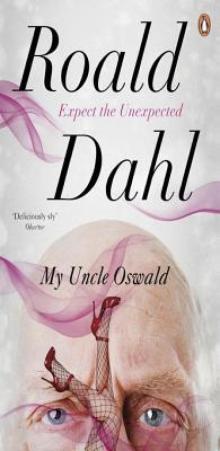 My Uncle Oswald
My Uncle Oswald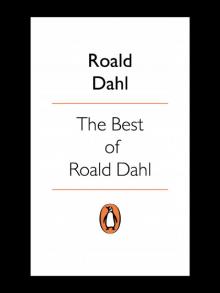 The Best of Roald Dahl
The Best of Roald Dahl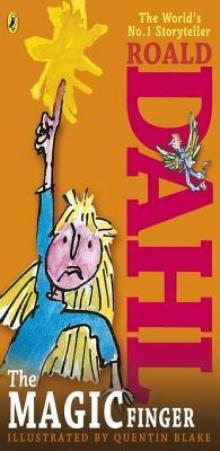 The Magic Finger
The Magic Finger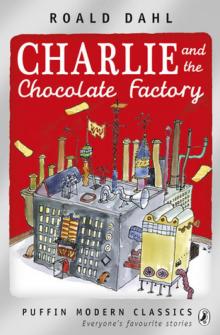 Charlie and the Chocolate Factory
Charlie and the Chocolate Factory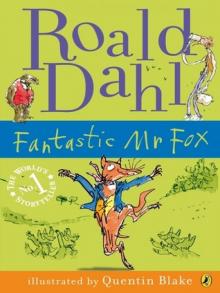 Fantastic Mr Fox
Fantastic Mr Fox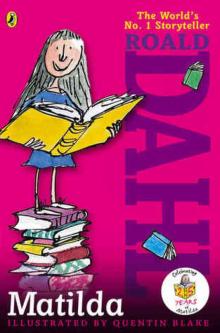 Matilda
Matilda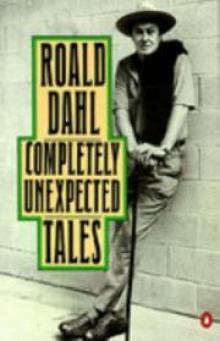 Completely Unexpected Tales: Tales of the Unexpected. More Tales of the Unexpected
Completely Unexpected Tales: Tales of the Unexpected. More Tales of the Unexpected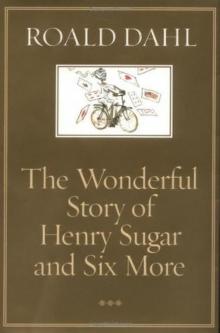 The Wonderful Story of Henry Sugar and Six More
The Wonderful Story of Henry Sugar and Six More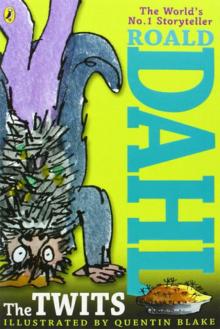 The Twits
The Twits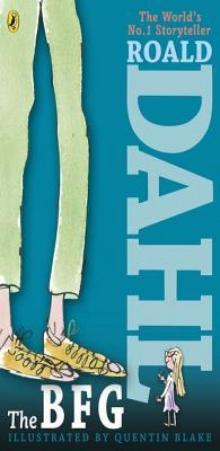 The BFG
The BFG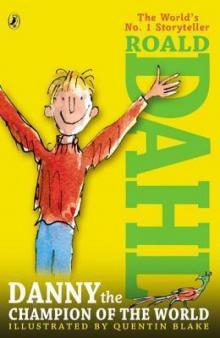 Danny the Champion of the World
Danny the Champion of the World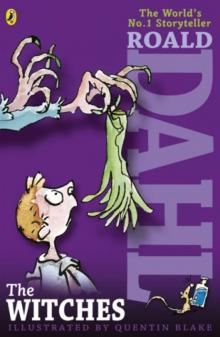 The Witches
The Witches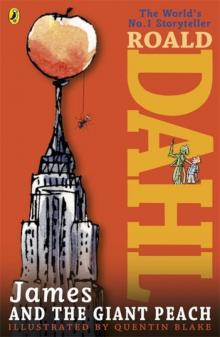 James and the Giant Peach
James and the Giant Peach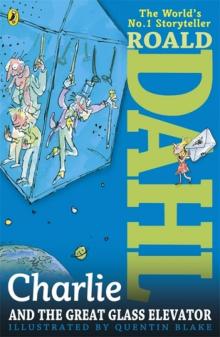 Charlie and the Great Glass Elevator
Charlie and the Great Glass Elevator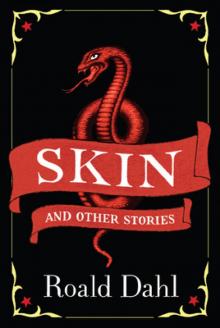 Skin and Other Stories
Skin and Other Stories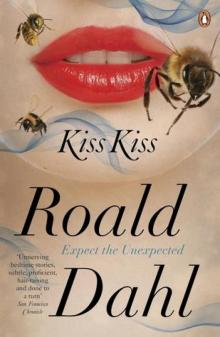 Kiss Kiss
Kiss Kiss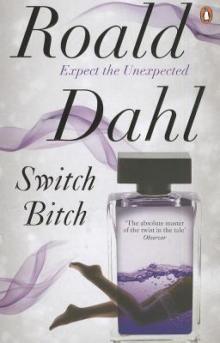 Switch Bitch
Switch Bitch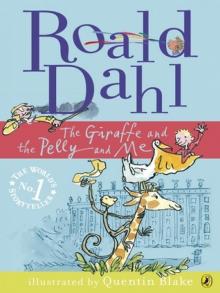 The Giraffe and the Pelly and Me
The Giraffe and the Pelly and Me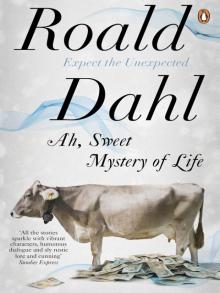 Ah, Sweet Mystery of Life
Ah, Sweet Mystery of Life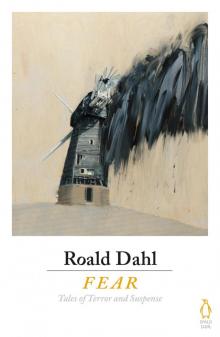 Fear
Fear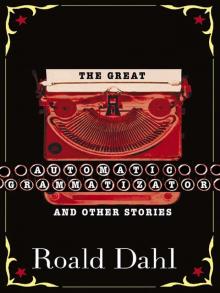 The Great Automatic Grammatizator and Other Stories
The Great Automatic Grammatizator and Other Stories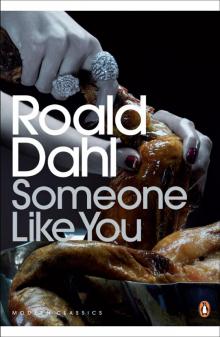 Someone Like You
Someone Like You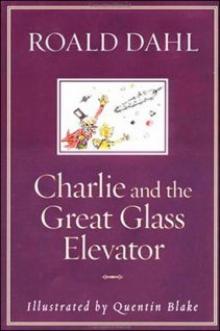 Charlie and the Great Glass Elevator c-2
Charlie and the Great Glass Elevator c-2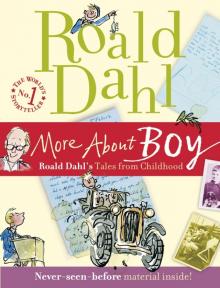 More About Boy
More About Boy Tales of the Unexpected
Tales of the Unexpected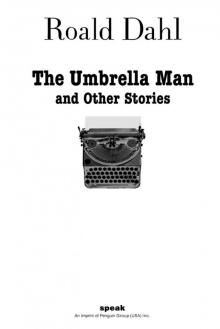 The Umbrella Man and Other Stories
The Umbrella Man and Other Stories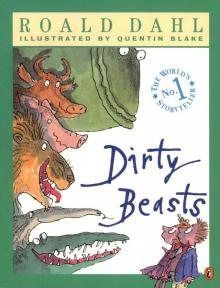 Dirty Beasts
Dirty Beasts Roald Dahl's Mischief and Mayhem
Roald Dahl's Mischief and Mayhem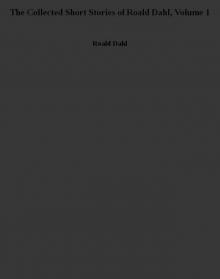 The Collected Short Stories of Roald Dahl, Volume 1
The Collected Short Stories of Roald Dahl, Volume 1 The Missing Golden Ticket and Other Splendiferous Secrets
The Missing Golden Ticket and Other Splendiferous Secrets Billy and the Minpins
Billy and the Minpins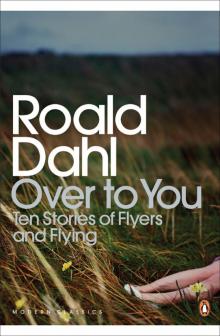 Over to You
Over to You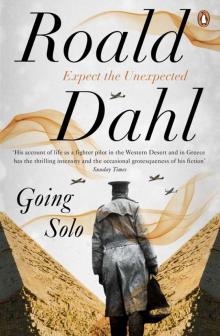 Going Solo
Going Solo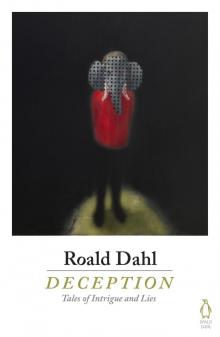 Deception
Deception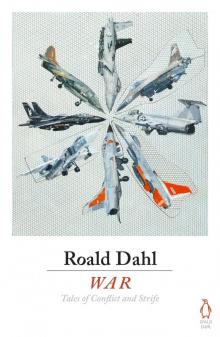 War
War Man from the South ee-3
Man from the South ee-3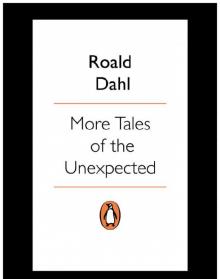 More Tales of the Unexpected
More Tales of the Unexpected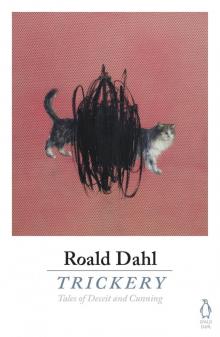 Trickery
Trickery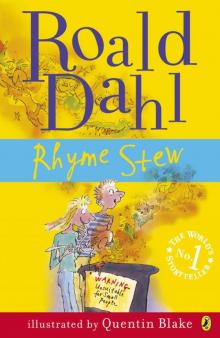 Rhyme Stew
Rhyme Stew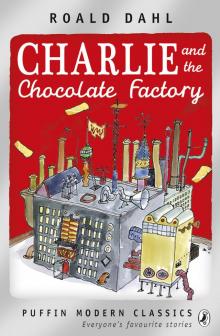 Charlie and the Chocolate Factory (Puffin Modern Classics relaunch)
Charlie and the Chocolate Factory (Puffin Modern Classics relaunch)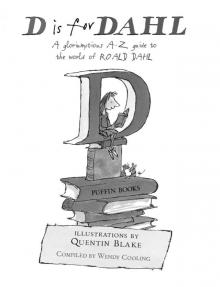 D is for Dahl
D is for Dahl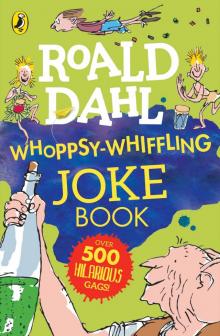 Roald Dahl Whoppsy-Whiffling Joke Book
Roald Dahl Whoppsy-Whiffling Joke Book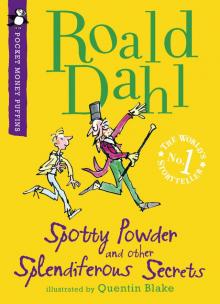 Spotty Powder and other Splendiferous Secrets
Spotty Powder and other Splendiferous Secrets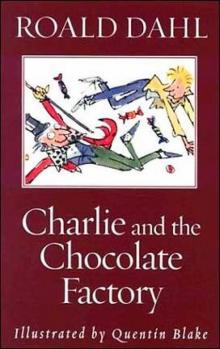 Charlie and the Chocolate Factory c-1
Charlie and the Chocolate Factory c-1 Boy
Boy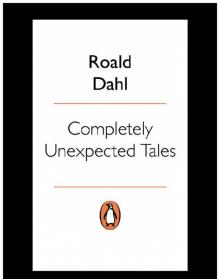 Completely Unexpected Tales
Completely Unexpected Tales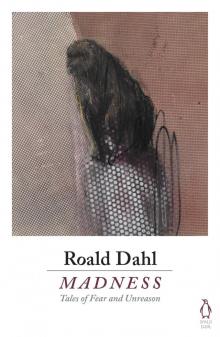 Madness
Madness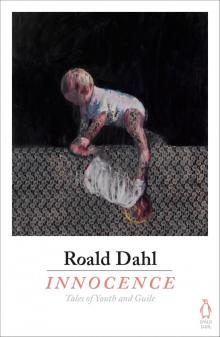 Innocence
Innocence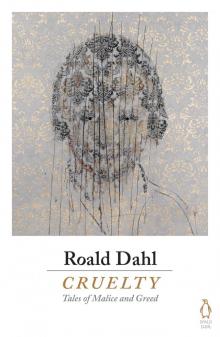 Cruelty
Cruelty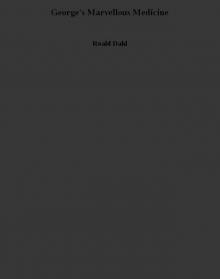 George's Marvellous Medicine
George's Marvellous Medicine